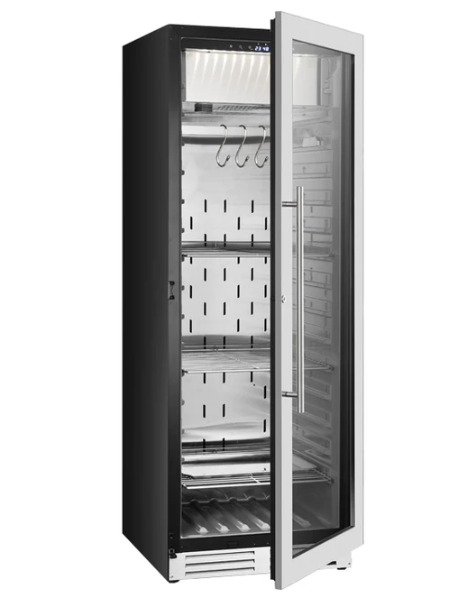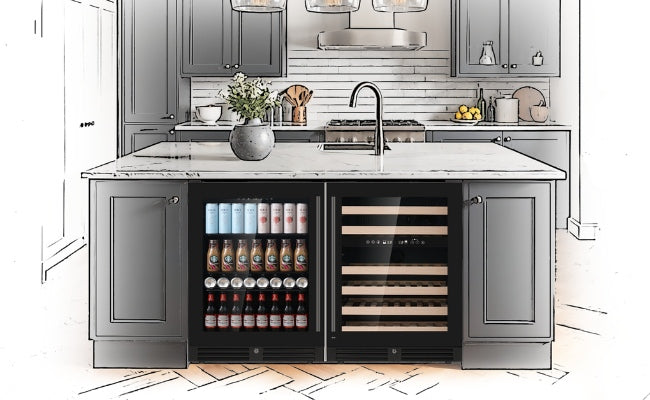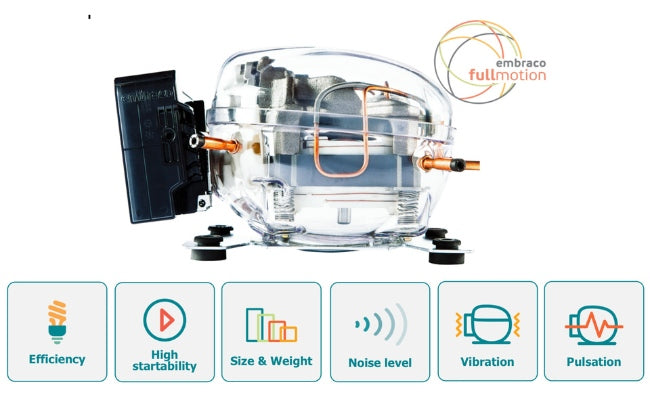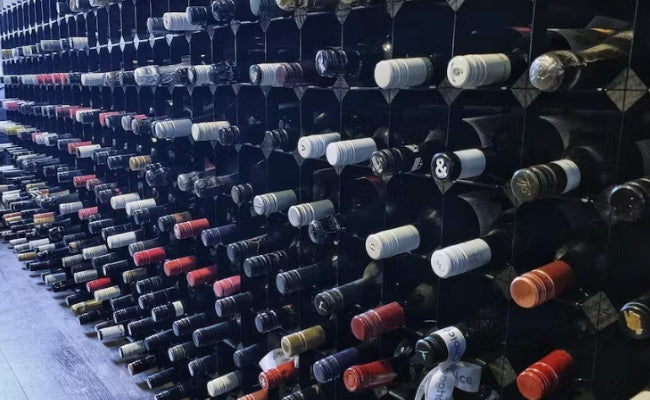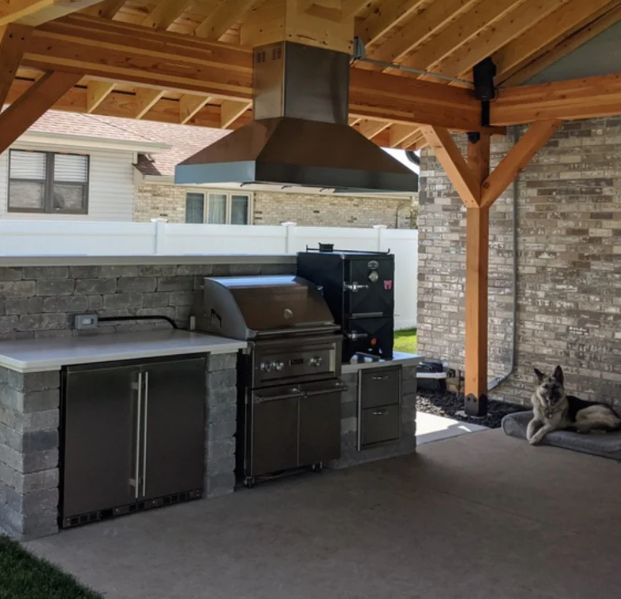Steak, in all its sizzling glory, is revered by food enthusiasts across the world. While fresh steak can offer a delicious meal, there’s something magical about dry-aged steak. With its intense flavor, buttery texture, and tantalizing aroma, dry-aging elevates beef into a culinary masterpiece. Traditionally, this process took place in professional butcher shops or high-end steakhouses. However, the evolution of technology has made it possible for anyone to replicate this experience—right in the comfort of their home.
Steak ager fridges have revolutionized the way people can enjoy dry-aged steak at home, simplifying what was once a process best left to the experts. This blog will explore everything you need to know about steak ager fridges, how the dry-aging process works, and tips to achieve restaurant-quality results.
What is Dry-Aged Steak?
A Simple Explanation
Dry-aged steak is beef that has been stored in a carefully controlled environment—low temperature, low humidity, and regulated airflow—for an extended period (anywhere between a few weeks to several months). During this time, two transformative processes occur:
-
Moisture loss: The water inside the meat evaporates, concentrating the overall flavor.
-
Enzymatic breakdown: Natural enzymes in the beef break down muscle fibers and connective tissues, creating a more tender and flavorful steak.
The result is beef with a nutty, rich flavor profile and an incredibly tender texture that melts in your mouth.
A Closer Look at the Science
-
Moisture Evaporation: Around 15-30% of the steak’s weight can be lost during the dry-aging process. This water loss reduces softness but concentrates umami flavors.
-
Fat Oxidation: Dry-aging works wonders on marbled cuts of beef (like ribeye and strip loin) as it brings out the buttery notes from the fat, resulting in a creamy richness.
-
Proteolytic Activity: Enzymes in the beef—calpains and cathepsins—break down tough muscle fibers and proteins, tenderizing the meat and enhancing flavor.
The Drawbacks of Traditional Dry Aging
Before steak ager fridges emerged, dry-aging was an intricate and somewhat fickle process, involving expensive equipment, a large commitment of time, and a great deal of expertise. Here are some challenges to dry-aging steak the traditional way:
-
Expert Skills Needed: Aging meat requires understanding humidity, temperature control, and airflow. Without the proper knowledge, you could jeopardize the product.
-
Food Safety Risks: Mishandling meat during long-term storage can result in bacterial infestations, spoilage, or an unsafe final product.
-
Space Requirements: A large refrigerator or walk-in cooler dedicated to dry-aging is costly and impractical for most home kitchens.
-
Yield Loss: In addition to moisture evaporation, the outer layer of beef forms a crust that must be trimmed off, leading to further weight loss.
In short, the barriers to at-home dry aging prevented many steak lovers from attempting the process—until now.
What Are Steak Ager Fridges?
Steak ager fridges are specialized appliances designed to create the ideal environment for dry-aging beef in a controlled and foolproof way. Unlike traditional large-scale butcher equipment, these compact units allow home cooks to replicate professional-grade dry-aging in a much simpler and safer format. These fridges regulate
temperature, humidity, and airflow, providing consistent conditions for aging meat. Many modern models also include
UV sterilization or antibacterial coatings to ensure food safety by reducing the risk of mold and bacterial growth.
How Steak Ager Fridges Work
A steak ager fridge essentially
mimics the conditions found in high-end aging rooms, with settings optimized for maximum flavor and safety. Here are the key factors it manages:
-
Temperature Control: Keeping the fridge temperature between 34°F and 38°F prevents bacterial growth while allowing the enzymes to work on breaking down proteins.
-
Humidity Control: Humidity is kept at ~75-85% to allow for moisture evaporation while preventing the beef from drying out too much.
-
Air Circulation: Efficient airflow prevents stagnation and helps with even aging.
-
Antimicrobial Features: UV light sterilization or activated carbon filters eliminate harmful bacteria or odors.
Advanced devices often come with smart features such as Bluetooth/Wi-Fi connectivity, allowing users to monitor and control the dry-aging process remotely.
Why Dry-Age Steak at Home?
Dry-aging steak at home offers three major benefits: customization, cost savings, and convenience.
1. Customization
When you dry-age steak at home, you control every aspect of the process. Want a more intense flavor? Age the steak for 60 or 90 days. Prefer a milder profile? Stop at 21 or 30 days. You also have complete freedom to experiment with different cuts of beef or try infusing the steak with other flavors (e.g., by salting or adding spices before aging).
2. Cost Savings
Buying dry-aged steak from a high-end butcher or steakhouse comes with a premium price tag. Some cuts can cost upwards of $50-$100 per pound. While steak ager fridges require an initial upfront investment, they allow you to age beef at a fraction of the cost over time, saving you money in the long run.
3. Convenience
With your own aging setup, there’s no need to depend on specialty stores to enjoy gourmet-quality steak. You can produce the meat on your own schedule and always have premium cuts ready for special occasions.
Step-by-Step Guide to Dry-Aging at Home
What You’ll Need
- A steak ager fridge (e.g., brands like Dry Ager, Steak Locker, or UMAi Dry Bags).
- Choice cuts of beef: Larger cuts, such as ribeye, strip loin, or sirloin, are ideal.
- A sharp knife for trimming the outer rind or “crust” after aging.
- Meat thermometer (for additional monitoring, if not already built into your fridge).
Step 1: Choosing the Right Cut of Beef
Dry-aging works best with large, fatty cuts of premium beef. The fat helps protect the interior from drying out too much during aging. Look for the following:
-
Bone-in Ribeye or Strip Loin: These cuts are perfect for steak lovers due to their marbling and rich flavor.
-
Size Matters: Choose a whole roast or primal cut rather than individual steaks. A minimum size of 8-10 pounds is recommended for optimal results.
Avoid lean cuts, such as filet mignon, as they lack the intramuscular fat that contributes to flavor and texture.
Step 2: Prepping the Steak for Aging
Trim any loose pieces of meat or fat surrounding the steak before placing it in the aging fridge. While this step is optional, cleaning up the edges will minimize unnecessary waste later. Some people like to salt their steak lightly before aging, although this isn’t required to achieve great results.
Step 3: Placing the Steak in Your Ager Fridge
Position the steak directly on the racks or hooks inside the aging fridge. Ensure there is enough space for air to circulate evenly around the meat. Follow these basic setup conditions:
-
Temperature: Set the fridge to 34°F (or the recommended temperature).
-
Humidity: Aim for a relative humidity of 75-85%.
-
Airflow: Make sure the airflow system is working, as stagnant air can lead to spoilage.
Step 4: Aging Time
The length of time you age your beef depends on personal taste preferences:
-
14-21 Days: The beef starts developing subtle flavor enhancements with a slight tenderness.
-
28-45 Days: Full dry-aged flavors emerge, including nutty, earthy, and buttery notes.
-
60+ Days: Intense, funky aromas and flavors develop. This is ideal for true carnivores who enjoy bold-tasting, gourmet steak.
Step 5: Trimming and Cooking
After reaching the desired aging time, remove the steak from the fridge. It will likely have developed a dry, dark outer crust. Use a sharp knife to carefully trim off this crust, exposing the tender, juicy steak inside. Cook your dry-aged steak as desired—grilling, pan-searing, or broiling are excellent methods. Keep in mind that dry-aged meat cooks faster due to its reduced moisture content, so always monitor the internal temperature.
Tips for Success
-
Start Small: If you’re new to dry-aging, start with a smaller aging period (e.g., 2-3 weeks) to get familiar with the process.
-
Monitor Conditions: Double-check your fridge’s temperature and humidity regularly. Consistency is key.
-
Use High-Quality Cuts: Dry-aging amplifies flavors—both good and bad. Only use high-quality, well-marbled beef.
-
Practice Patience: Dry-aging requires time, but the wait is worth it for the incredible flavors you’ll enjoy.
FAQs About Dry-Ager Fridges
1. Do I need special skills to use a steak ager fridge?
No! These fridges are designed for ease of use; simply set the temperature and let the machine do the rest.
2. Can I age other meats besides beef?
Yes—some people use these devices to age lamb or pork, although dry-aged beef is the most popular.
3. Is dry-aged steak safe to eat?
Absolutely, when done correctly. Modern steak agers have safety features (e.g., UV sterilization and antimicrobial materials) to eliminate bacteria.
